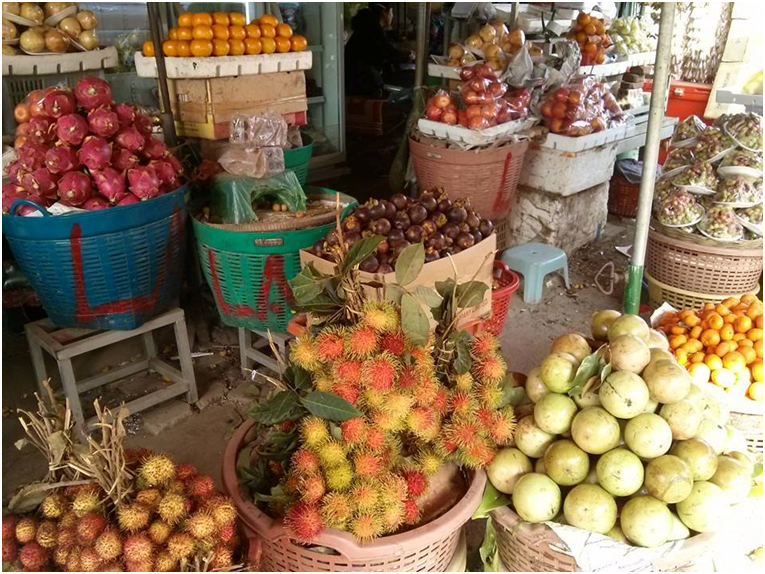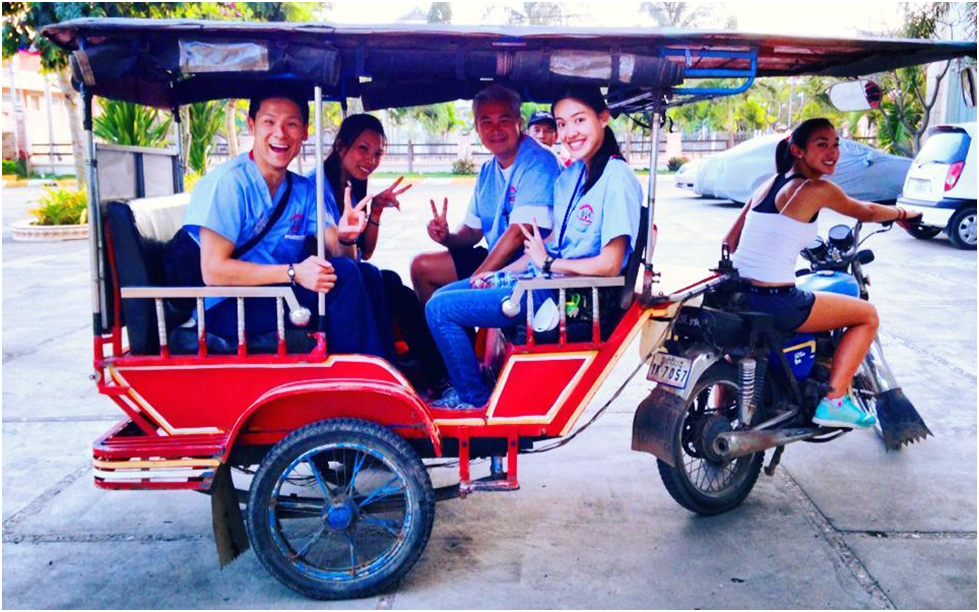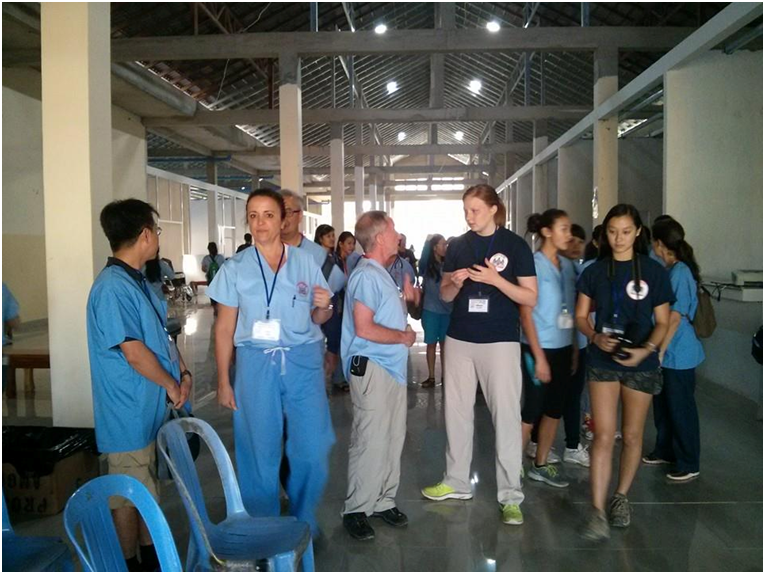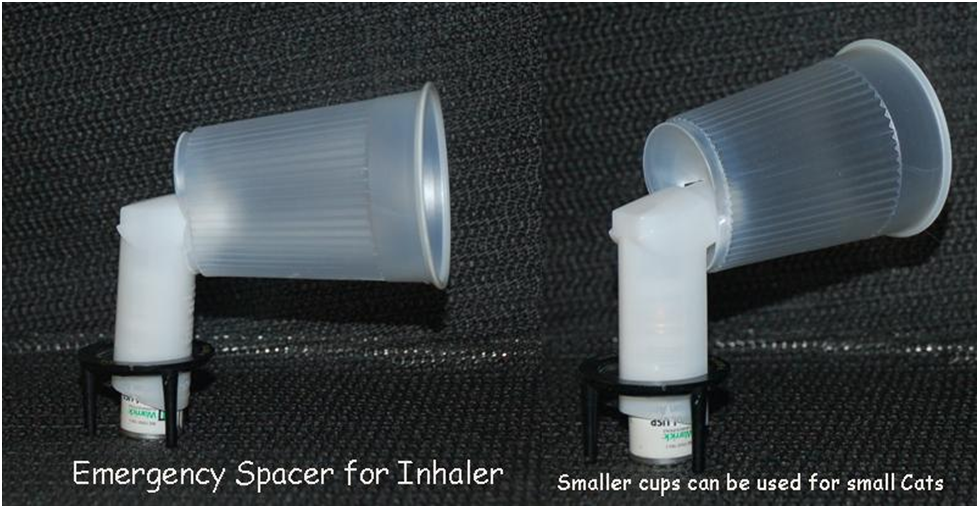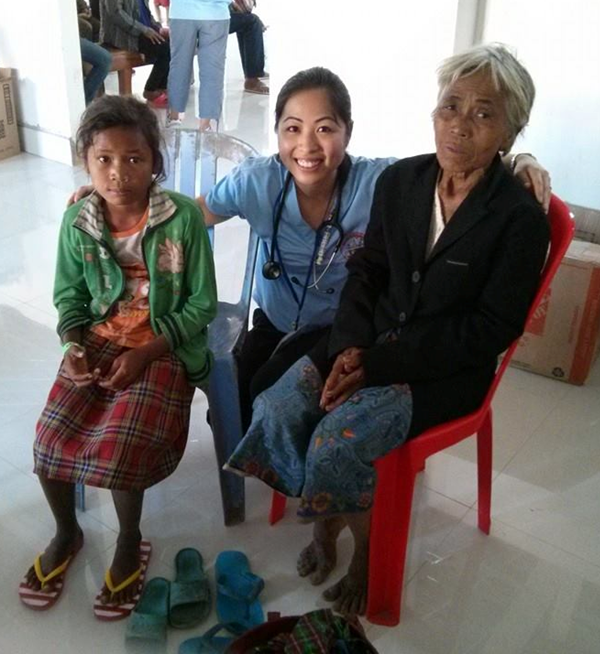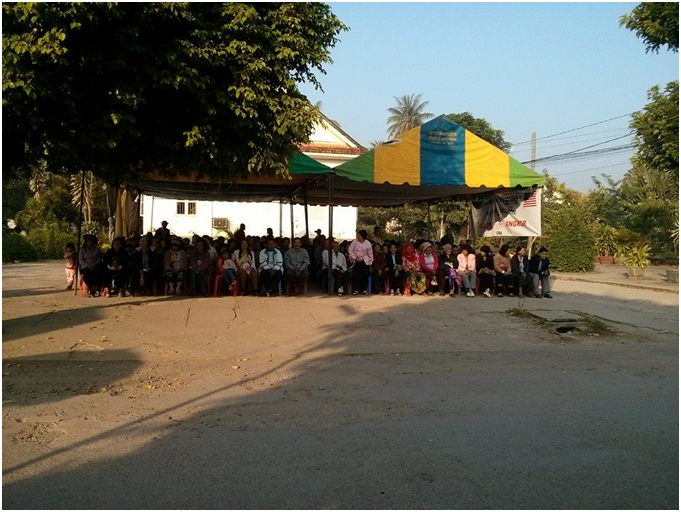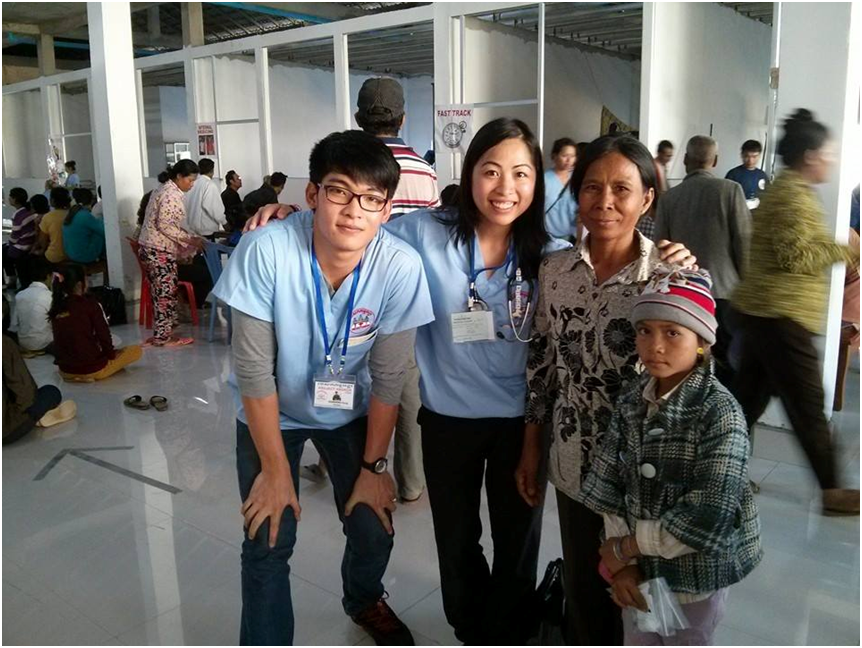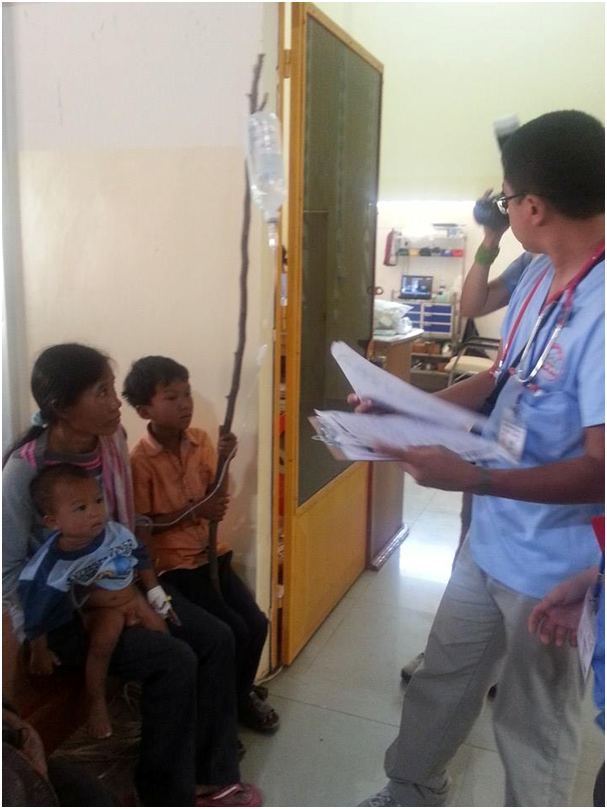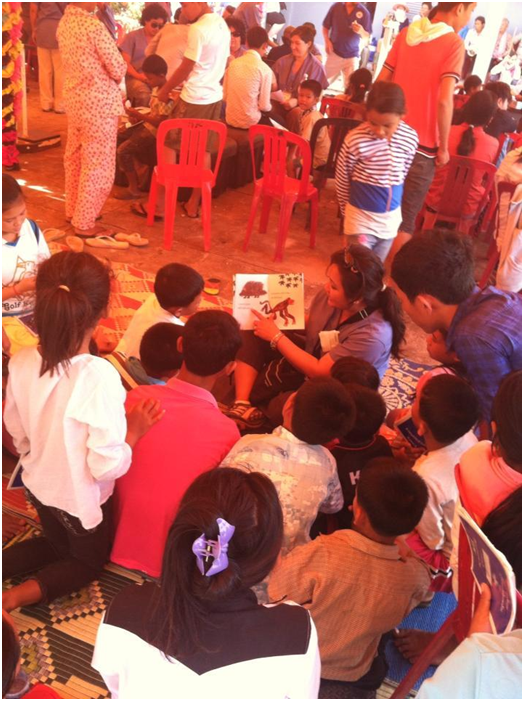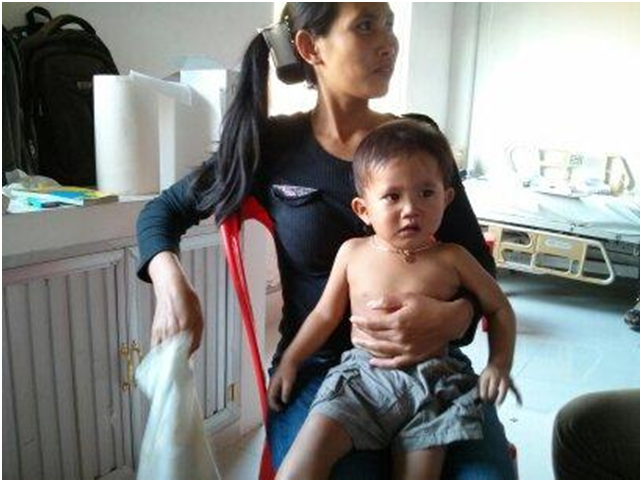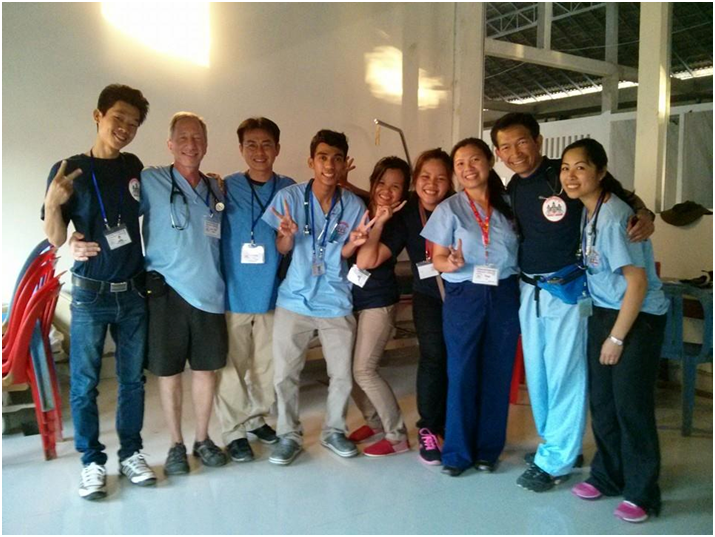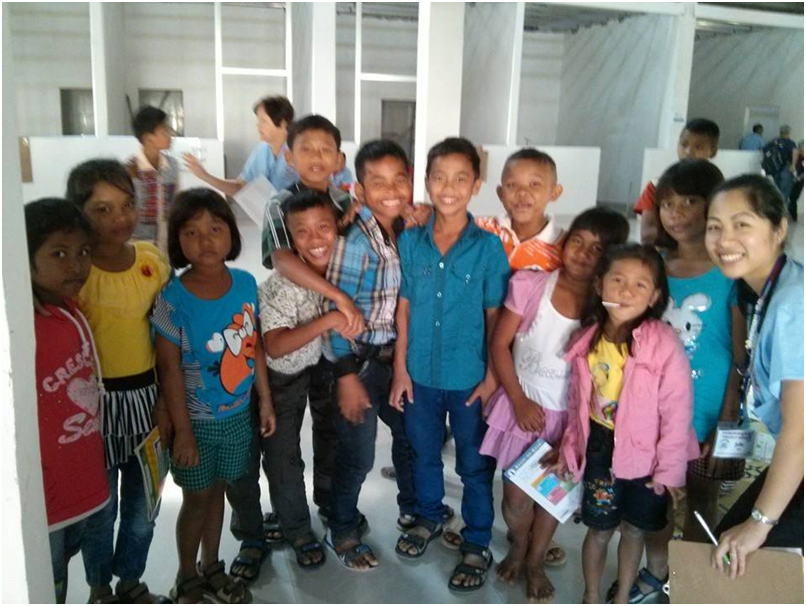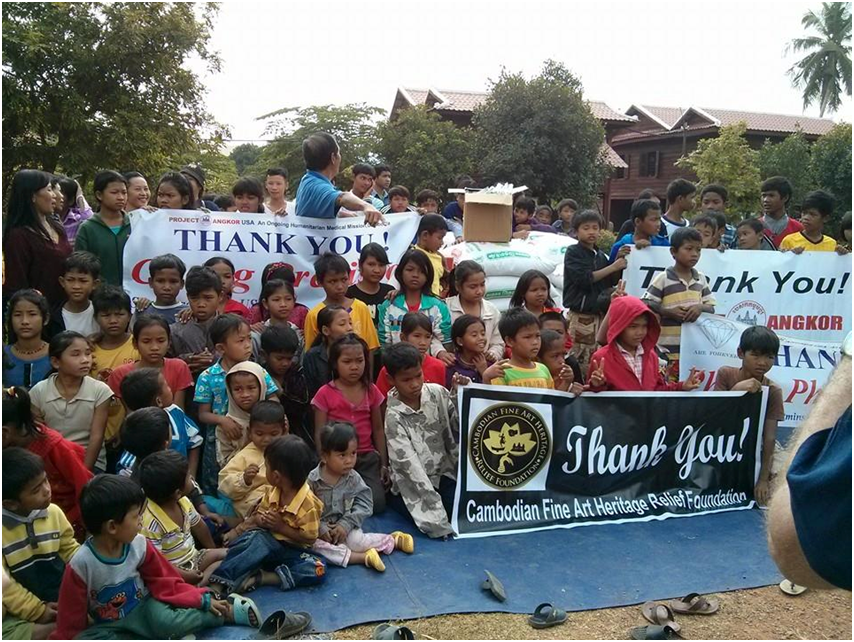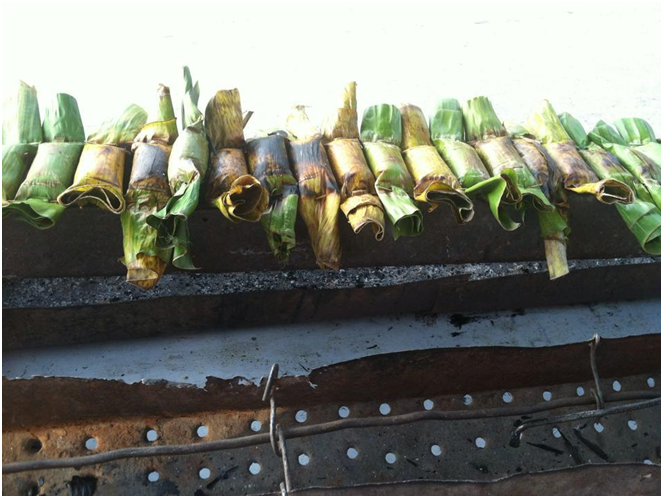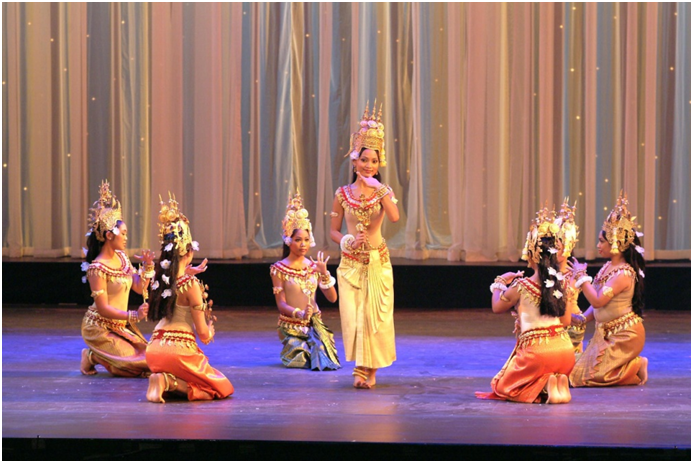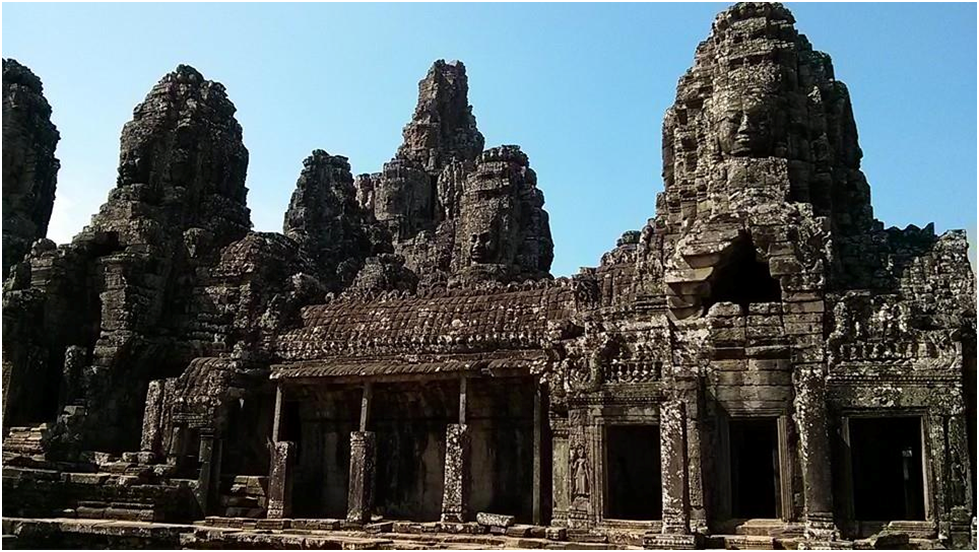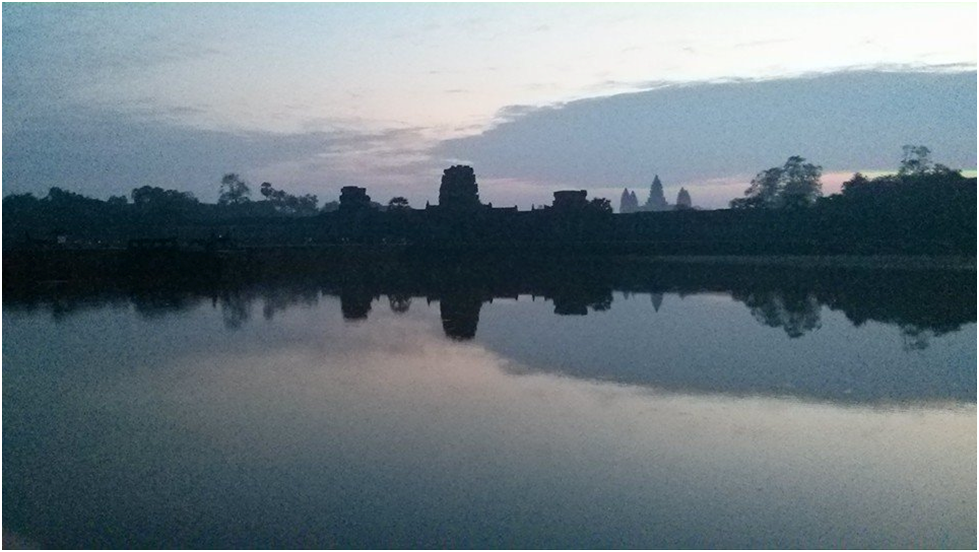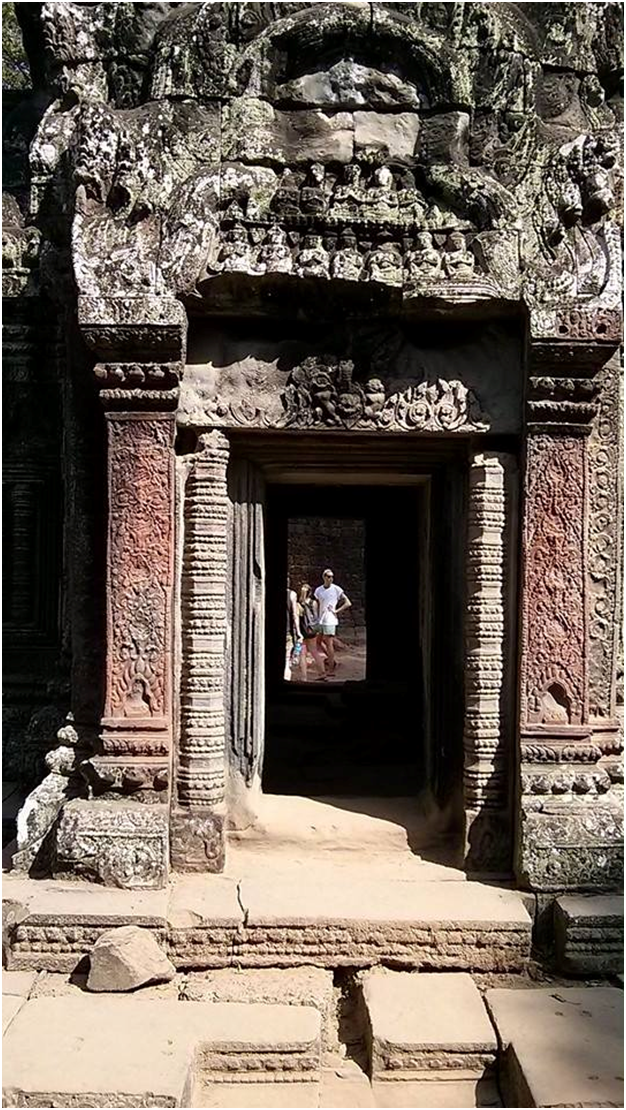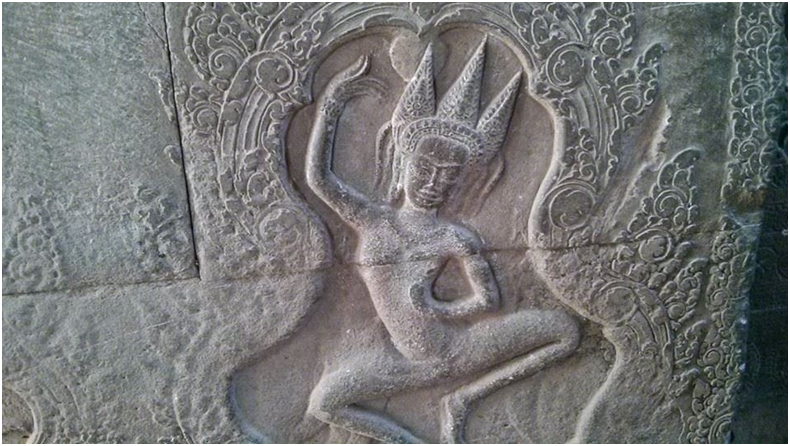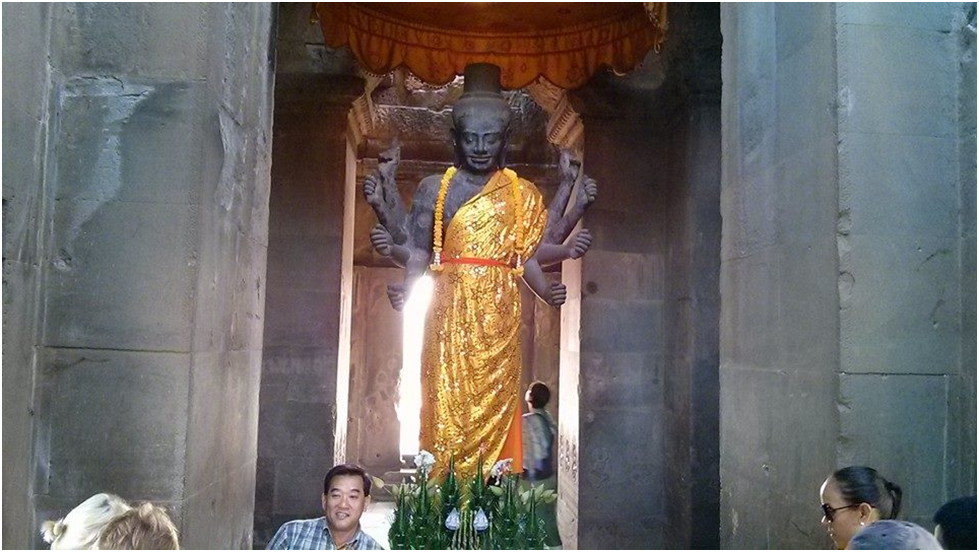Written by Chuong Dang, MD PGY3 at Kaiser Permanente Oakland Pediatrics Residency Program on a…
Project Angkor – Julie Tea, MD
Posted by Julie Tea, MD (a second year Pediatric resident from Kaiser Permanente, Oakland while on a global health elective in Phnom Penh, Cambodia with Project Angkor ).
Day 1: Flight to Phnom Penh
Day 2: My arrival in Phnom Penh
As soon as my plane began to make its descent to Phnom Penh International Airport, my heart began to race wildly, what would I find waiting for me? I had visited Cambodia once before many years prior with my parents but had always wanted to return. My parents are Cambodian Americans that escaped Cowdong (an internment camp in Thailand) to become refugees in the United States in 1984. More about that later.
As soon as the doors opened, I felt the humidity of the air. I walked down a ramp that led me through immigration and then my bags. On my car ride to my hotel, I couldn’t keep my eyes from the windows- hundred of scooters on the road, some with up to 3 or 4 riders including infants and children, one scooter had a child 2 or 3 years standing up behind his father on the scooter seat, many carts selling a variety of goods including fruits and other snacks were on the sidewalk. Where once dirt roads stood, there were now paved streets and many more cars than my last visit. After arriving at my hotel and taking a short nap, I explored the surrounding area and saw that there were many stores with English writing and was pleasantly surprised to find out that the vendors spoke English. I grew up speaking Cambodia but when I couldn’t find the right words, it was nice being able to clarify things in English. For dinner, I had a wonderful dish called Fish Amok- which is a stew/curry with fish, vegetables, and spices. It is an extremely common dish in Cambodia and the recipe and presentation varies from province to province.
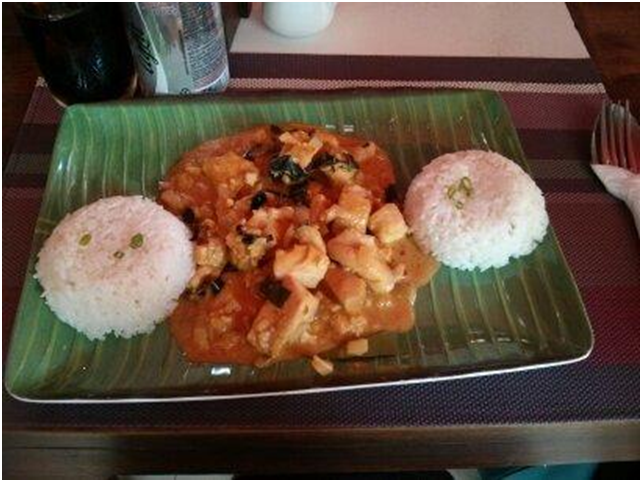
Day 3: Project Angkor Team Arrives
In the morning, the Project Angkor Team flying in from Los Angeles arrive. There is a crowd of about 50-60 people and there is a hive of activity with people searching for roommates and getting settled in. In the early afternoon, we take Tuk Tuks (similar to the one pictured above) which are wooden contraptions attached to motorbikes/scooters to cart people around. Up to 6 adults, 3 on each wooden bench can fit in to the Tuk Tuk to tour the Sihanouk Hospital Center of Hope or SHCH abbreviated for short. It is a wonderful hospital run by HOPE worldwide and sees up to 350 patients daily, regardless of their ability to pay. It is funded mainly by private donations and also has a team of physicians, nurses, and pharmacists who donate their time seeing patients but also training Cambodian medical staff and medical students in an effort to continue the wonderful patient care. The hospital provides therapy such as anti-retrovirals, performs surgery, and has a busy Emergency department. Afterwards, Dr. Mark Langdorf, a UC Irvine Emergency Medicine attending gave a lecture to the group and staff at SHCH a powerpoint presentation on reading and interpreting EKGs.
Day 4: 9 hour bus ride from Phnom Penh to Battambang
The bus stopped every hour and each bus stop had wonderful snacks including dried taro chips, dried banana chips, grilled fish, and fresh fruit. Each of the stops had toilets consisting of pipes connected to basins in the ground.
Day 5: Setting up Clinic
After waking up, we had breakfast which consisted of stir fried noodles, ice coffee with condensed milk, and rice porridge with salted hard-boiled eggs and pickled daikon radish, we headed over to set up clinic. There, boxes and boxes of medical equipment including medication, dental equipment, toys for the children, toothbrushes had arrived. Everyone flying through LAX had only brought 1 small carry on and had used their 2 checked bags to check in a large box of medical equipment. Most of the day was spent opening boxes, unpacking the supplies, finding beds and chairs, and cleaning the area. Luckily, Battambang Provincial Hospital had opened up a new clinic area that they had not started using and was allowing Project Angkor to use the area temporarily. We felt extremely lucky to have such a wonderful site to work in, there was running water, electricity and windows for fresh air.
The Project Angkor Volunteers were a diverse range of Americans that had traveled from Kansas, Maryland, California, and Illinois and included residents, ED, pediatric, and internal medicine physicians, PICU nurses, transport nurses, undergraduate students, high school students, pediatric dentists, adult dentists, pediatric dental hygienists, academic professionals, and pharmacists who wanted to donate their time, money, and energy to come to Cambodia to help the people. This is Project Angkor’s 4th annual mission and each year they choose a new site to treat Cambodians.
Day 5: Clinic Day 1
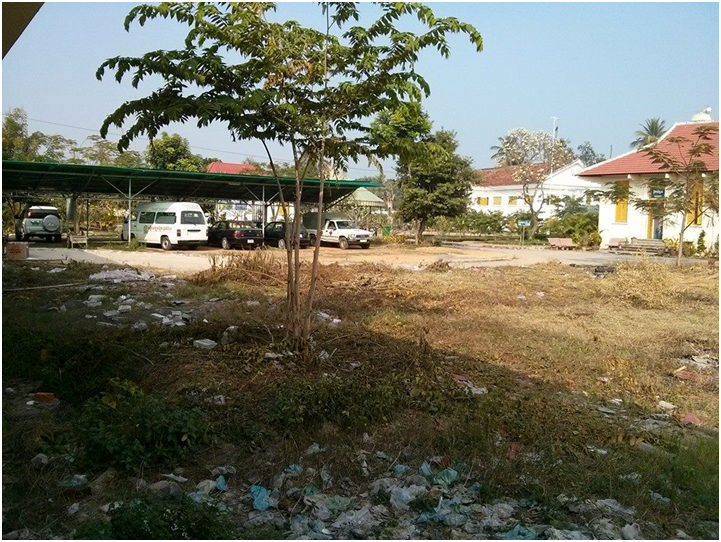
I couldn’t sleep last night! The excitement and the anticipation was too much. We all arrived at clinic by 7 AM to finish setting up and gathering supplies to meet our patients. We found a line of patients waiting for us outside, hundreds and hundreds. An opening ceremony was held by the Mayor of the city of Battambang as well as the medical director of the hospital to welcome the team.
I saw up to 40 patients a day in clinic! The children were wonderful, they would wait up to 12 hours to be seen and were extremely polite and shy. Many of them would not offer information without prompting and many of the chief complaints were abdominal pain, cough, fever, loose stools, headache, and heart palpitations. I often found myself directly asking the patients if they had worms in their stool and at least 40-50% had said that they did and had seen worms for months to years. Many times this information would not be offered without direct questioning. I must have prescribed 20 doses of albendazole. Many of the patients came in with wheezing and our single albuterol nebulizer we had brought from the United States short circuited when we attempted to plug it in. It was difficult knowing that there were wheezing children and no albuterol or atrovent that could be given. We prescribed steroids instead and had patients return the next day if their coughing were to worsen. That night, after we walked home, we walked to a nearby market and bought many plastic cups that we cut a hole out of and dispensed as make shift aerochamber masks.
Day 6: Clinic Day 2
This was the busiest day by far. There was a TV advertisement and newspaper reports about American doctors here to see patients. Hundreds of orphans came by to have a well-child check, teeth pulled, or to be looked at. Almost every single child I saw had terrible dentition, many with their teeth rotten to the pulp. When I asked if their mouth hurt, they said a little. One child after being seen, had 4 molars pulled and did not make a peep during the procedure. I asked her if she was okay and she said the procedure did not hurt at all. I always made it a point to tell the children to brush their teeth twice daily and limit sugar intake.
Many of the orphans that we saw had scabies, months of loose stool that we attributed to Giardia, as well as poor weight gain. We often got asked if there was a magical pills that could be given to help the children grow and with a sad smile (if there was no history of abdominal pain or worms), we would tell them more food. Many of the children suffered from malnutrition- children who were 8 years old often weighted 20-something kgs. I saw 3 year-olds that weighed under 7 kg.
One patient below had an IV bag that was hung on a make shift stick.
Day 7: Clinic Day 3
By day 3, I had gotten much faster at seeing patients, assessing for acute otitis media, listening for wheezing or crackles, and asking about worms or foul-smelling stools. There were many children waiting to be seen and one of the lovely PA volunteers had brought boxes of toys to give out to the children. Also, if I ever felt slightly tired, I would ask the children how far away they lived and how long they had been waiting. Many patients had come from miles away by scooter and had been waiting outside since 4 AM for a chance to be seen. Yet they sit patiently waiting the entire day. The Project Angkor volunteers would donate money daily to help buy bread and water for the patients waiting to be seen. Many would not eat or drink the whole day due to lack of money and fear or losing their spot in line. I was becoming an expert at dosing albendazole and metronidazole.
Day 8: Clinic Day 4- Heart Defect
My third patient of the day had a chief complaint of heart problem. I asked Mom about the history and she stated that her son had a hole in his heart that he had been born with and never fixed. She also stated that he was very easily fatigued, turned blue when he cried, and had poor growth. I auscultated a ¾ holosystolic murmur that was heart throughout the precordium and he had a thrill. He was brought to the nurses station where his pulse oximetry was read at 58% and repeated at 61%. An ultrasound machine on loan from sonosite was available so one of the ED physicians performed a bedside ECHO on a screaming child and we visualized a large VSD with right ventricular hypertrophy. “Please help” the mom begged, “I am worried my son will die if he does not have surgery.” I looked at her wordlessly, “I am sorry, we can not do surgery.” There was a feeling of helplessness and sadness that overcame me. This young 3 year-old boy likely had irreversible pulmonary vascular obstruction and poor cardiac function because of an unresolved VSD that would have immediately been fixed in the state. I spoke with mom further at length and she stated that she had been seen in Siem Reap at Angkor Hospital for Children and that she had been placed on a waiting list. I talked with one of the medical supervisors who attempted to expedite another referral to Angkor Hospital. I began to think about how there was very little we could do in terms of surgery and that there were so many things we could not fix, such as their poor growth due to malnutrition and their poverty level. Many children walked in to clinic with sandals 2 sizes too small or no shoes at all. I often stop to think about that young boy and his mother. Afterwards, I emailed Hearts Without Boundaries to plead their case. Heart Without Boundaries often visits Cambodia to perform open heart surgeries at no cost.
Day 9: Clinic Day
The last day of clinic was bittersweet. We had all become a family. We had 25 medical students who were invaluable in providing translating help who were given stethoscopes to take home as well as diplomas.
Day 10: Bus Ride to Siem Reap and Orphanage Visit
After closing clinic, we visited a nearby orphanage where hundreds of pounds of rice and hundreds of bottles of water were donated.
This day, we took a bus from Battambang to Siem Reap which took about 3 hours. On a bathroom stop along the way, we spotted some roasted banana leaves filled with sticky rice and banana. They were a delicious treat.
That evening, we attended a traditional Cambodian dance ceremony called Apsara.
Day 10: Explore Angkor Wat
This day, we spend exploring Angkor Wat, one of the wonders of the world. It is a beautiful stone temple built in the 11th century dedicated to one of the Hindu gods. It only took 37 years to complete and everyone stone piece has intricate carvings and beautiful friezes meet you at every corner.
Day 11: Tour of Angkor Children’s Hospital
Day 12 Bus Ride to Phnom Penh
8 hour bus ride to Phnom Penh from Siem Reap. I made a mental note not to have liquids in the morning and was successful! The road was extremely bumpy and had large pot holes every few hundred feet.
Day 13: Fly out of Phnom Penh
I had a wonderful time in Cambodia. Project Angkor – video
